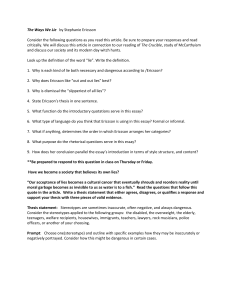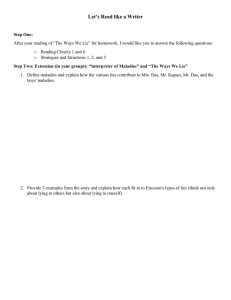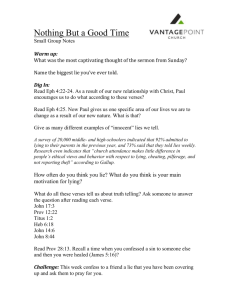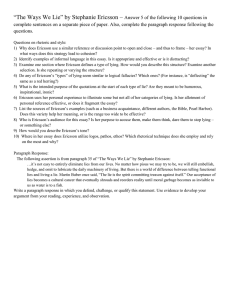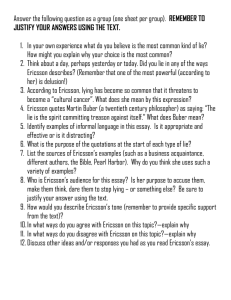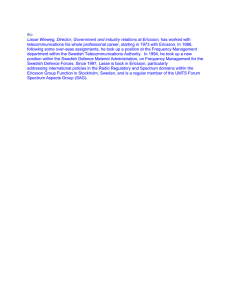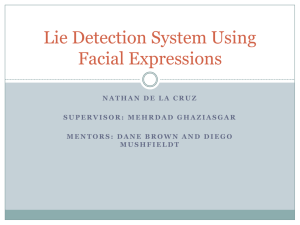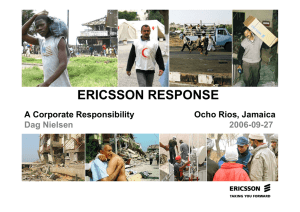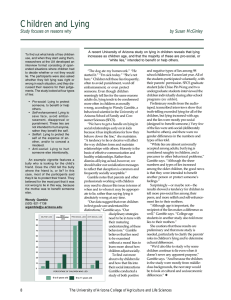Lying: Journal Prompts & Article Analysis
advertisement
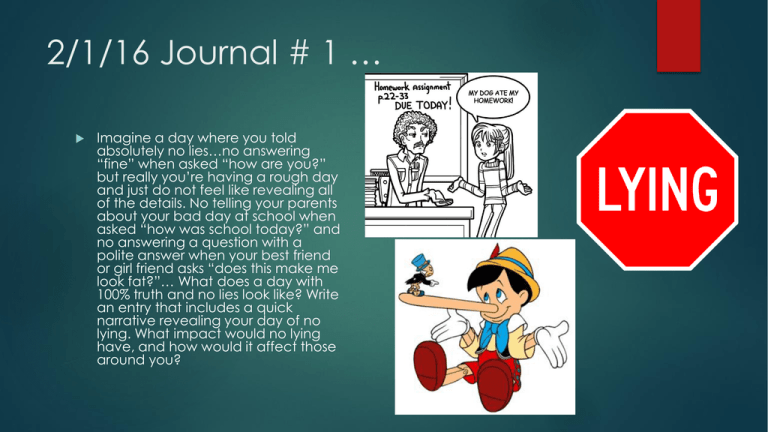
2/1/16 Journal # 1 … Imagine a day where you told absolutely no lies…no answering “fine” when asked “how are you?” but really you’re having a rough day and just do not feel like revealing all of the details. No telling your parents about your bad day at school when asked “how was school today?” and no answering a question with a polite answer when your best friend or girl friend asks “does this make me look fat?”… What does a day with 100% truth and no lies look like? Write an entry that includes a quick narrative revealing your day of no lying. What impact would no lying have, and how would it affect those around you? “The Ways We Lie” Read the article with a partner or group of three. Take notes on the provided chart paper, and work together to identify the following: author’s thesis audience purpose concession evidence As a group, decide which type of lie is the most harmful. Then, formulate an argument stating your claim, and give evidence to support your ideas. Questions: Answer as a group 1. Ericsson starts out by recounting her own four-lie day (paragraphs 1-2). What is the effect of this introduction? 2. How many kinds of lies does Ericsson describe? How does the number of kinds of lies help her make her larger point about lying? 3. At the beginning of each kind of lie, Ericsson provides an epigraph, a short quotation that forecasts theme. In your opinion, which of these epigraphs works best and why? 4. Does Ericsson think it’s possible to eliminate lies from our lives? What evidence does she offer? 5. What is the message of Ericsson’s conclusion? Does the conclusion work well? Why or why not? Reflection: Journal # 2… Analyze and reflect on the following quote from the article: “Our acceptance of lies becomes a cultural cancer that eventually shrouds and reorders reality until moral garbage becomes as invisible to us as water is to a fish.” What is the point of the analogy and what connection/s can you draw? Explain your ideas.
